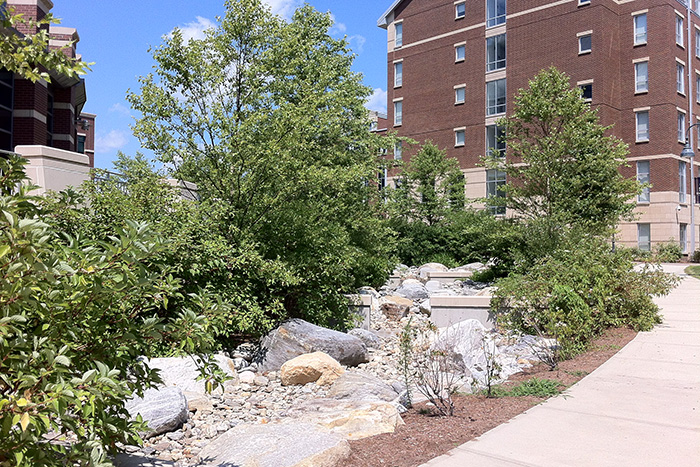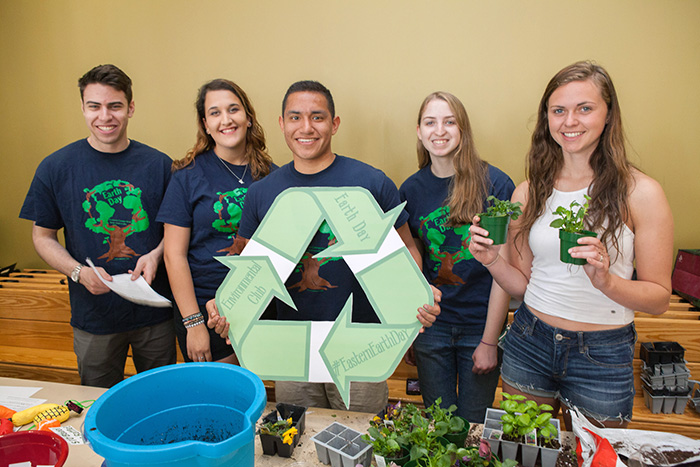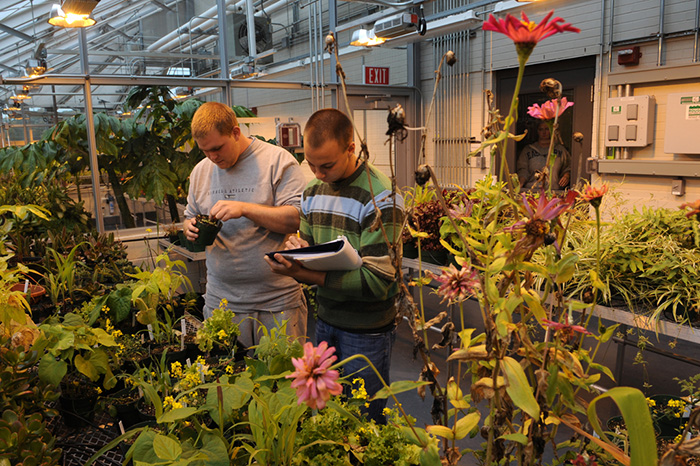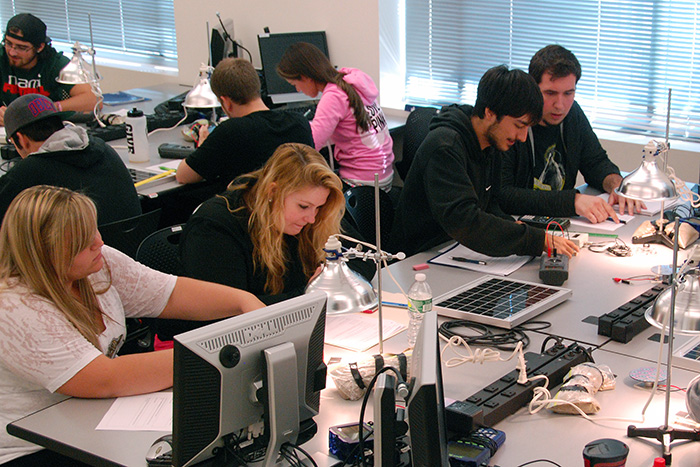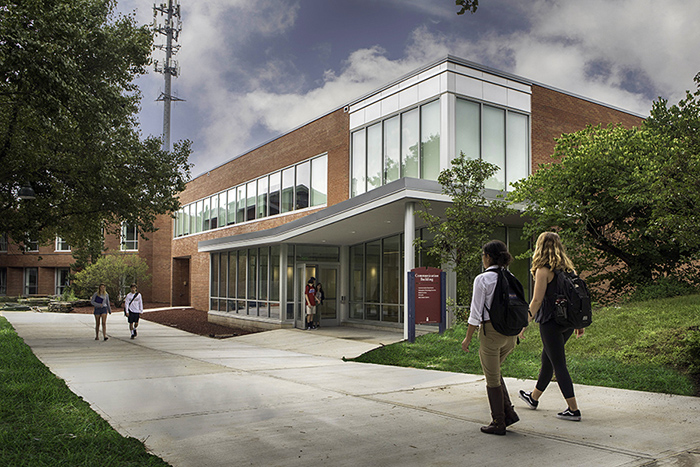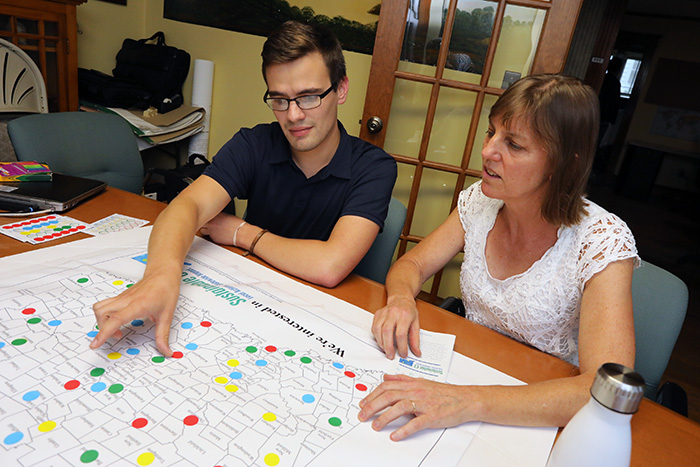- Apply
- Visit
- Request Info
- Give
Eastern reaffirms commitment to climate as nation pivots
University’s 2020 Climate Action Plan outlines way to a greener future
Written by Michael Rouleau
Published on February 24, 2021
Eastern Connecticut State University has reaffirmed its commitment to meeting the challenges of climate change, reflecting recent moves by the federal government and thousands of environmental leaders nationwide. After the Biden Administration formally rejoined the Paris Climate Agreement on Feb. 19, Eastern has united with thousands of communities and organizations to sign the America Is All In promise, a national effort to reduce greenhouse gas emissions by 50 percent by 2030 and reach net zero emissions by 2050.
As a host institution of the 2021 Climate Action Pursuit, kicking off this week from Feb. 24–26, Eastern is a leader among hundreds of colleges and universities that will participate in a series of sessions meant to advance their institutions’ climate goals. Led by Second Nature and the Intentional Endowments Network (IEN), three Climate Action Pursuit sessions will follow the February kick off in June, October and December. As a host Institution, Eastern has made a formal commitment to participate in the Climate Action Pursuit as a campus cohort with 10 administrative representatives.
“Eastern has been involved with the environmental movement since the first Earth Day in 1970,” said Eastern President Elsa Núñez, “and I am proud that our participation continues to this day. Whether focused on campus recycling programs, preparing students for green careers, or providing Connecticut municipalities with sustainability assistance, we are deeply committed to energy conservation, a sustainable environment and a safer, greener world for future generations.”
Núñez is the chair of Second Nature’s Climate Action Steering Committee, which leads more than 600 member institutions in the Climate Leadership Network (CLN). Led by presidents and chancellors from higher education institutions across the country, the CLN is committed to mobilizing the sector’s knowledge and expertise to accelerate global climate action and rapidly reduce carbon pollution and increase resilience to climate hazards.
Following its own example as well as the guidance laid out in the University’s Climate Action Plan—which was revised in late 2020—Eastern is well positioned to meet the current and oncoming challenges of climate change. The University has set for itself a more ambitious goal than the one established by America Is All In, pledging to achieve carbon neutrality on campus by 2030, rather than 2050.
“Eastern lies within the Eastern seaboard corridor that runs from Boston to Washington, D.C. — one of the most densely populated regions in our nation,” said Núñez. “By accelerating our carbon neutrality goals, we can support the country’s environmental objectives while demonstrating leadership by example.”
As outlined in the Climate Action Plan, Eastern’s three-pronged approach aims to increase efficiency and lower the carbon footprint of campus operations, nurture a sustainability-minded campus culture for students, faculty and staff, and support sustainability beyond Eastern’s borders in communities throughout Connecticut.
As a result of Eastern’s enduring commitment to sustainability, the University has reduced greenhouse gas emissions over time and been recognized with a STARS (Sustainability Tracking, Assessment & Rating System) silver rating in 2012, 2016, 2019 and 2020; Sierra Club Cool Schools ranking in 2018; and Princeton Review Green College recognition 11 years in a row. Beyond campus, Eastern’s Institute for Sustainable Energy (ISE) continues to lead a statewide certification program called Sustainable CT, which supports more than 100 communities in becoming more sustainable, equitable and resilient.
Many strategies have been implemented since the University’s first Climate Action Plan in 2009. Among its accomplishments, the University has cut paper consumption by 50 percent; five buildings are certified to LEED Silver Standards; a fuel cell installed in 2012 provides heat and electricity to the Science Building; all residence halls are retrofitted with low-flow shower heads; solar lighting illuminates campus walkways and parking lots; the dining hall reduces food waste with tray-less dining; commuters can charge up at electric vehicle charging stations; a Green Theme housing option allows likeminded students to live and plan events together; and more.
Building on the progress of the past decade, the 2020 revised Climate Action Plan focuses on short-term, intermediate and long-term strategies to be implemented within the current decade to achieve the institutional goal of carbon neutrality by 2030. The strategies fall within the impact categories of operations, campus life, and planning and administration.
Goals in the area of operations include working with vendors to reduce the sale of plastic bottles; further reducing use of paper by setting printers to double-sided printing; reviewing building temperature settings to better reflect occupied/non-occupied hours as well summer/winter outdoor conditions; growing food in the University’s greenhouse; implementing composting across campus dining facilities and residence halls; investing in electric vehicles for campus shuttles; developing a carpooling program for faculty and staff; and utilizing 100 percent renewable energy for all campus needs.
“A sustainable campus encompasses more than reducing greenhouse gas emissions,” said Núñez. “It means giving sustainability-minded students the tools they need to enact change on campus and in their lives after they graduate.”
Goals in the area of campus life include increasing sustainability literacy by adding requirements to Eastern’s Liberal Arts Core (LAC) for all students; adding a session on sustainability to the first-year orientation program; increasing signage across campus about sustainability practices; adding a sustainability committee to the Student Government Association with representation on Eastern’s Green Campus Committee; and more.
In the area of planning and management, the University aspires to improve data collection and develop and enforce new sustainability policies. Goals in this area include closely monitoring greenhouse gas emissions data and reporting in collaboration with administrative offices including the Office of Institutional Research, Institute for Sustainable Energy, Center for Sustainability Studies and the Eastern Institute for Data Analytics. Another goal includes developing incentive programs to help departments become greener.
For more on the 2020 Climate Action Plan, visit https://www.easternct.edu/sustainability/easternct_2020_climate_action_plan.pdf. For more on sustainability at Eastern, visit https://www.easternct.edu/sustainability/index.html. For the Center for Sustainable Energy Studies, visit https://www.easternct.edu/sustainable-energy-studies/index.html.
###
About America Is All In:
When the Trump Administration pulled the United States out of the Paris Agreement, more than 4,000 leaders from America’s city halls and communities declared, “We Are Still In” and committed to uphold America’s Paris climate goals. In the absence of federal leadership, the founding group stepped in to launch America’s Pledge, an initiative that quantified the climate actions of U.S. cities, states and businesses to drive down emissions in line with the Paris climate goals, and submitted them to the United Nations on behalf of the United States. America Is All In builds on We Are Still In and America’s Pledge.
About Second Nature:
Second Nature is a Boston-based NGO committed to accelerating climate action in and through higher education. This is accomplished by mobilizing a diverse group of higher education institutions to act on bold climate commitments, to scale campus climate initiatives, and to create innovative climate solutions. Second Nature aims to align, amplify, and bridge the sector’s efforts with other global leaders to advance urgent climate priorities.
About Intentional Endowments Network:
IEN is a non-profit, peer-learning network advancing intentionally designed endowments — those that seek to enhance financial performance by making investments that advance an equitable, low carbon and regenerative economy. Working closely with leading organizations, the network engages leaders and key stakeholders from higher education, foundations, business and nonprofits. It provides opportunities for learning and education, peer networking, convening, thought leadership and information exchange around a variety of strategies (e.g., ESG integration, impact investing and shareholder engagement).



